“Airport opening day was a historic day, it was more like a wedding or a festival. People were applauding, dancing Dabke, and singing with joy while Yasser Arafat was welcoming the delegations,” Abeer Al Jarf tells me. Al Jarf was once an Aeronautical Information Service (AIS) officer in Gaza’s airport watchtower. “Tens of planes were landing on the airport’s runway that day, the building of the airport and the beauty of nature were indescribable. We were very happy to work in this place, but one day the Israeli airplanes destroyed the radar building, our happiness turned to tragedy.”
On December 23, 2021 a group of artists from Tamer Institution for Community Education went to visit what is left of the damaged Yasser Arafat International Airport which is located on the south of the Gaza Strip, close to the Egyptian border. The majority of the team had no clue the airport had even existed. Once we got there they started painting and photographing their ideas and feelings about the airport to later present them in an exhibition on March 28, 2022 at Institut Français de Gaza.
“The idea of this exhibition came after the last aggression while the youth teams and I were searching for a way to talk more about our feelings,” Besan Nateel, the coordinator of the project tells me. “There were many ideas but the idea of talking about Gaza’s airport was the most interesting one. We took the teams for a trip to the airport after many attempts to get a permit from the Ministry of the Interior, which coordinates with the Israeli and Egyptian sides. The first time we went it was a big shock for all of us. No one was able to describe the way he/she felt or thought.”
“One of the people who joined us on our first visit was the engineer Emad Al-Hammss as well as the warehouse head Mahmoud Hamad, and three more people who had worked in the airport before it was bombed. They told a lot about the part of the airport they worked in, and about the flight process. After that, there were several trips to the place and that is when we started painting.”
The airport opened in November 1998, after the Wye River agreement between Israel and the Palestinian Authority. Part of this agreement included a ‘‘Protocol Regarding the Establishment and Operation of the International Airport in the Gaza Strip.” The opening of the airport meant so much for the Palestinians back then. It made them feel like they are one step away from reclaiming their stolen right of becoming free.
In 2000, the Israeli air force bombed the airport for the first time, and then hit the flight control tower and destroyed the runways during the second Intifada. Finally, during the Lebanon war in the summer of 2006, Israel bombed and destroyed the main building at the airport, which burned to the ground.
Fatima Al Jabri, a 22-year-old artist who participated in the trips told me, “On my first visit to the airport, many questions had popped into my mind like, why can’t we travel? Why did I not get the chance to take a flight from our airport? Why do we feel like refugees while we are in our homeland? This exhibition was our way to share our dreams, and to deliver a message for the old generation that we still dream of having an airport, and to tell the next generation that one day we had one.”
Currently, the Gaza Strip has no airport and has been under Israeli siege for over a decade. Israel controls Gaza’s airspace and territorial waters, as well as two of the three border crossing points. Whoever wants to pass through one of these crossings must get a permit, which is not easy.
It means that the Rafah border crossing with Egypt is the only way for the Palestinians in Gaza to travel to the world out of the prison they live in. However, it takes time for them to travel through it, especially for youth, unless they have something urgent such as illness or a marriage.
Otherwise, if they need to travel on a specific date, to catch a flight for example, then you need to pay the companies that coordinate with the Egyptian side and sometimes it does not work. Even when it does, the trip from Gaza to Egypt can be a struggle.
Many negotiations have taken place to push Israel to rebuild the airport in the Gaza Strip, but they have failed, including a proposal from the Qatari envoy who oversees the Gulf state’s humanitarian aid for the Gaza Strip to build an airport. All these demands have failed as Israel argues that rebuilding the airport might affect their security.
The failure of the political negotiations and the series of repeated violations against the Palestinians in the Gaza Strip, Sheikh Jarrah, Yatta, Beita, and every Palestinian locality was the main reason for having this exhibition. The exhibit is part of the national reading campaign, and it helps show an example of how Palestinians use art and literature to make their voice heard, and try to connect with the world in a language anyone might understand.
“Seeing the paintings and the pictures of the airport made me feel even worse, and I think that this is the point,” Karam Jad a young Palestinian man who attended the exhibit told me. “I wouldn’t know anything about the existence of this airport if my uncle didn’t work there. They have been promising us to rebuild this airport since I was a little child. I remember that after the end of every aggression and the start of a truce we have been promised that an airport and seaport would be built, but we still got nothing. These paintings could speak louder than the political discussions, who knows?”
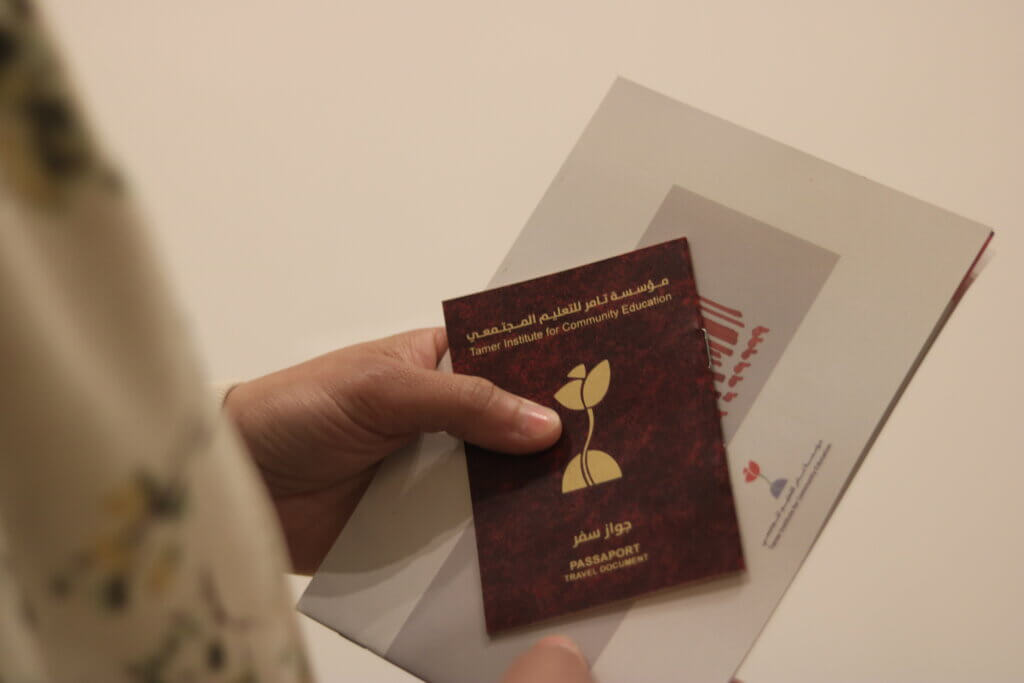
Thirty-five artists, including painters, photographers, writers, and singers participated in the exhibition which included more than 40 pieces of artwork, a documentary film, and a musical performance. Each participant was also given a “passport” which was created for the exhibit and enhanced the feeling that you were touring a real airport.
Liberation is the dream that the Palestinians have shared from one generation to another. These artists from Gaza City, the world’s biggest prison, have used the remnants and memory of the airport to take their first step towards their liberation and regaining their rights.
Aseel Kabariti
Aseel Kabariti is a photographer and writer from the Gaza Strip.

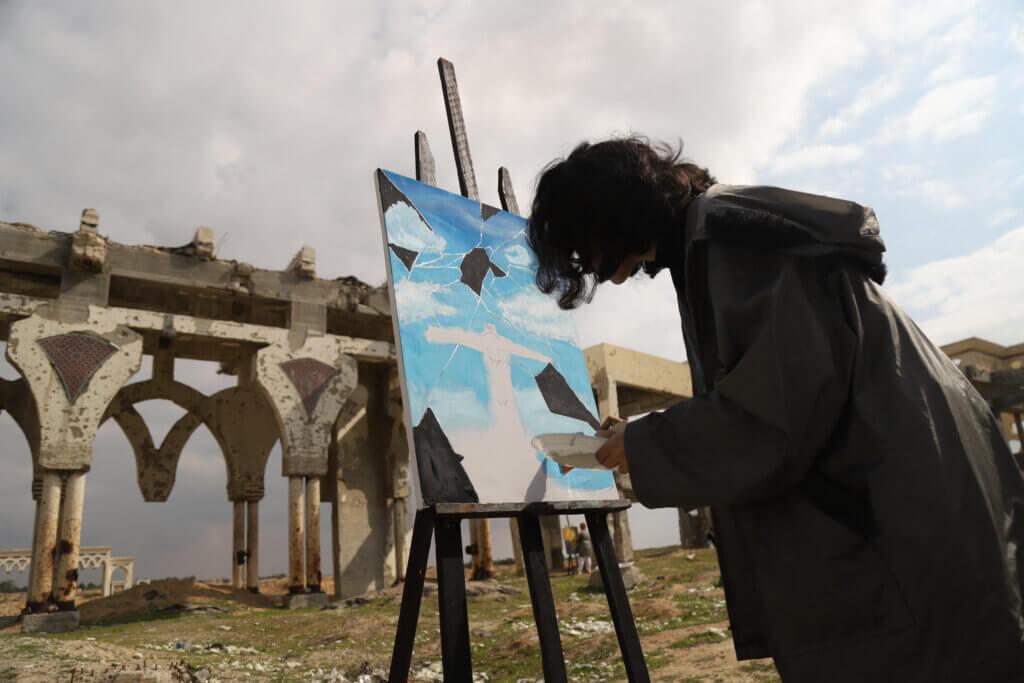
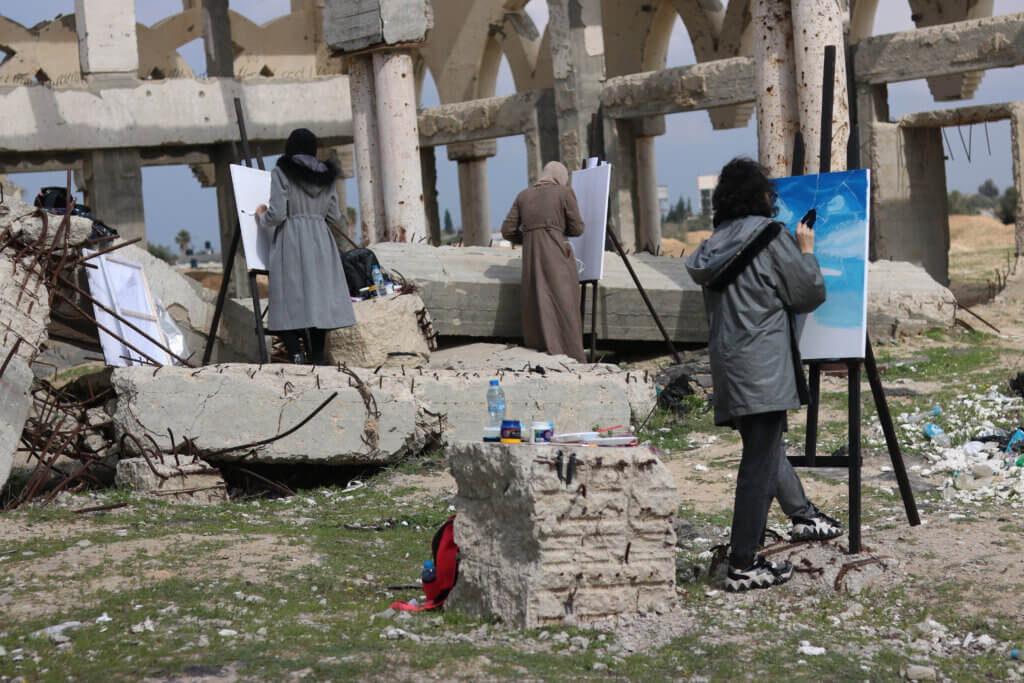
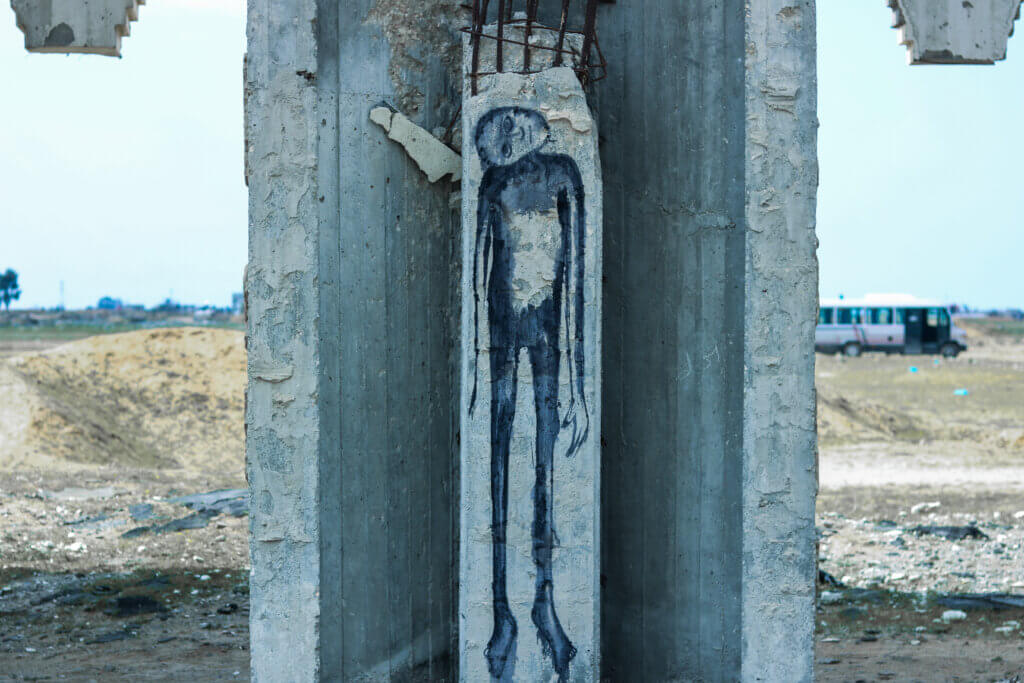
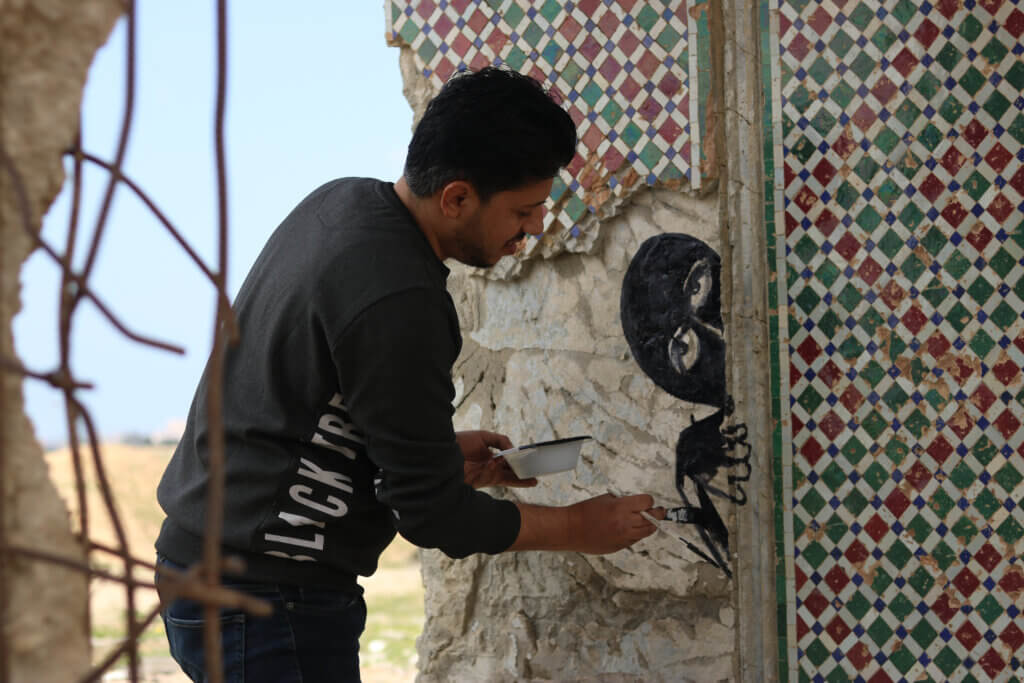
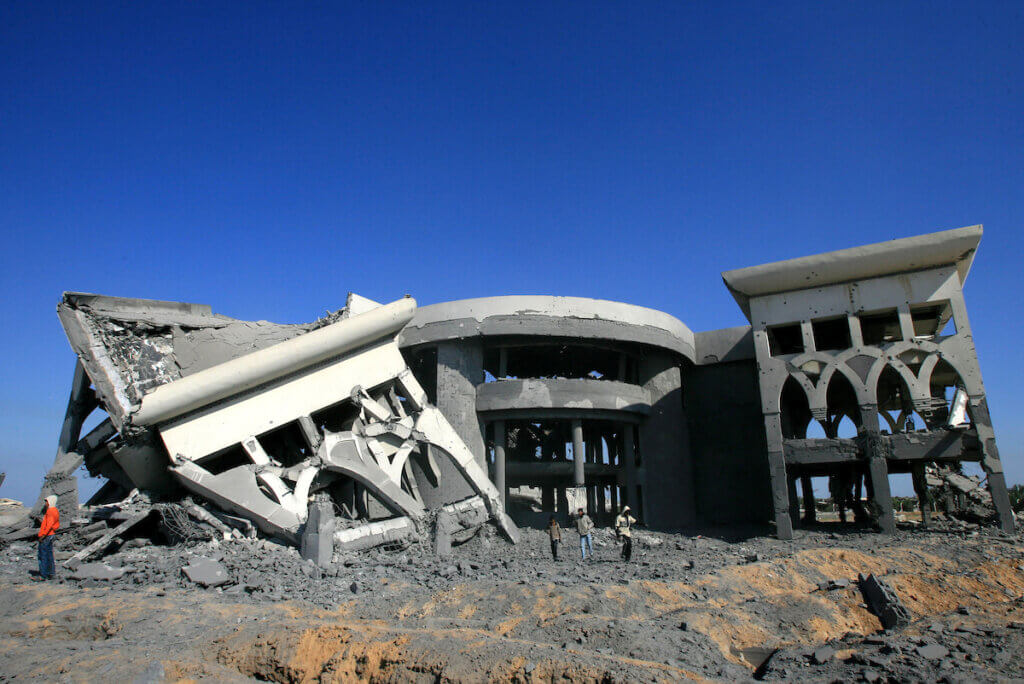
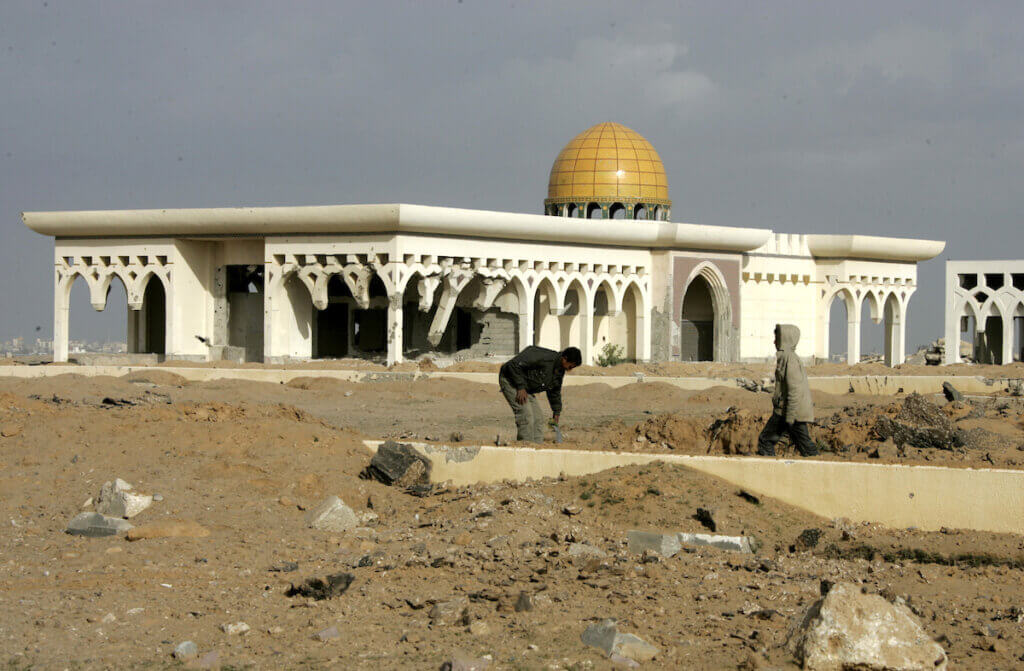
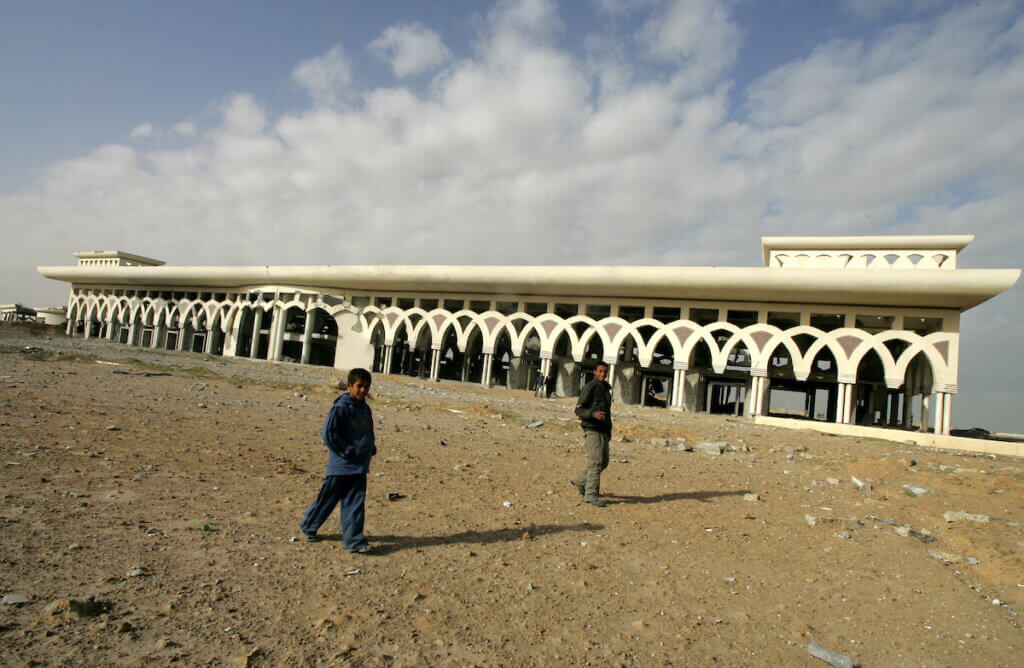
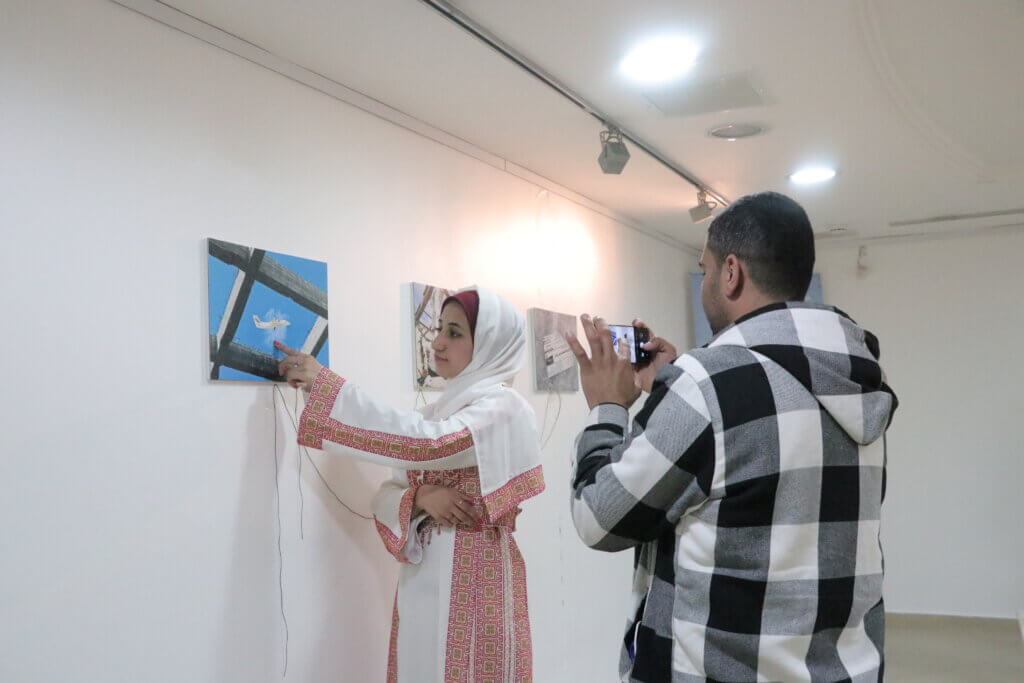
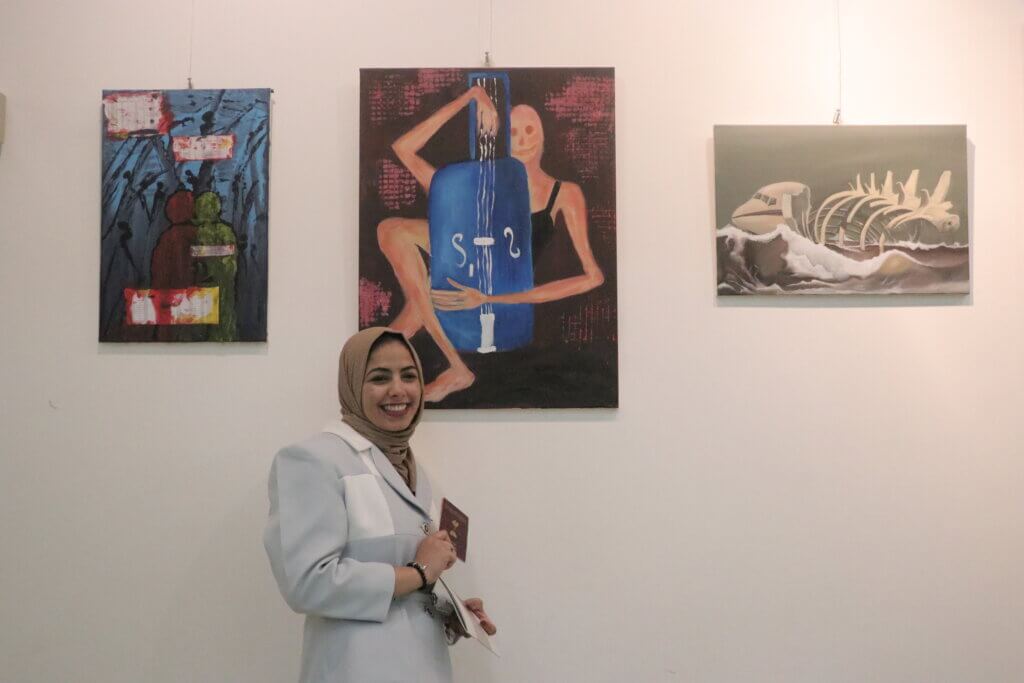
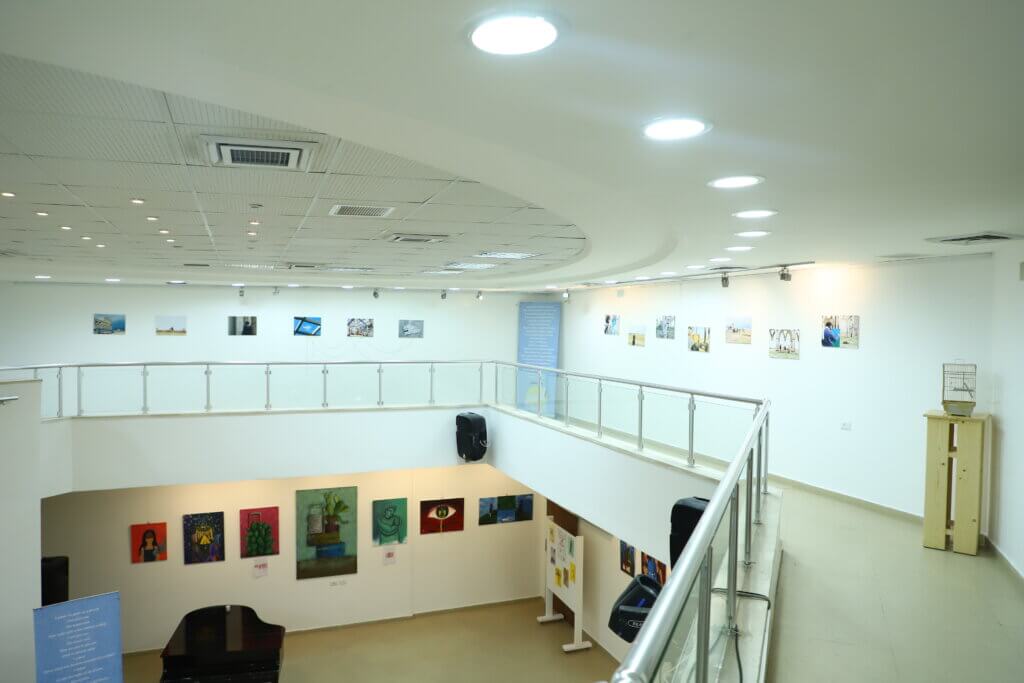

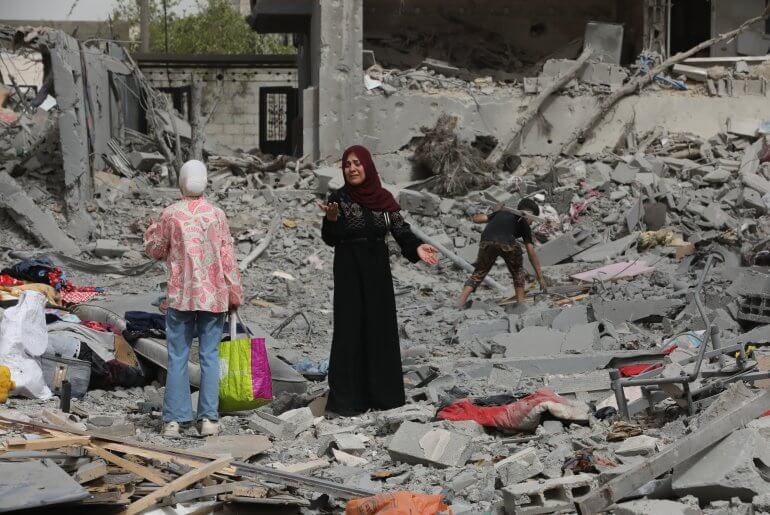
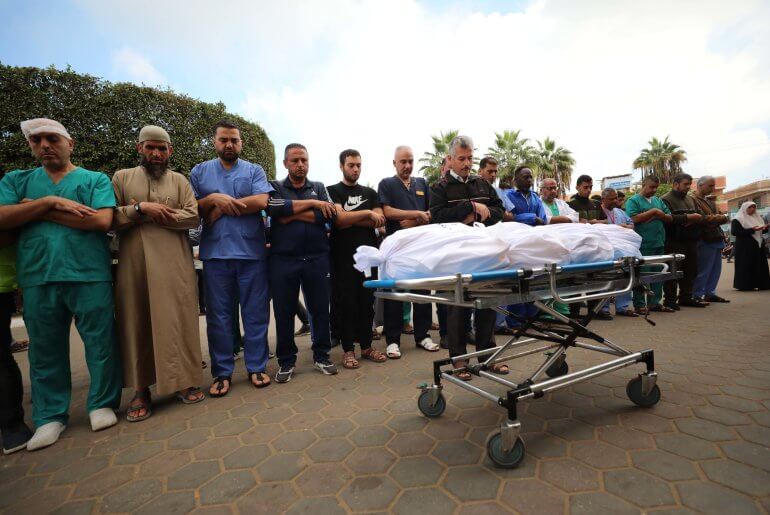
For the record:
1 of 2
The first organized Palestinian resistance organization was Fatah, founded secretly in 1958 by Yasser Arafat (nom de guerre, Abu Ammar) along with Salah Khalaf & Khalil Wazir in Kuwait. (Fatah, which means “victory” in Arabic is a reverse acronym of Harkat al Tahrir al Falastine i.e., Movement for the Liberation of Palestine). Underground cells were established in Kuwait & the refugee camps in Jordan, Syria, & Lebanon. In 1958, the organization began publishing a monthly magazine, Falastinuna (Our Palestine) to promote solidarity within the Palestinian diaspora. Citing the Algerian uprising against French colonialism, Fatah advocated that Palestine could only be liberated through revolutionary resistance. After achieving victory over France in 1962, Algeria became the first Arab country to provide military training facilities to Fatah.
.
2 of 2
In 1964, with a membership of about 200, Fatah publicly revealed its existence in Damascus. This was prompted by the Arab League’s creation of the Palestine Liberation Organization (PLO) which although supposedly led by Ahmed Shuqairi (a man of many words & no action), was in fact controlled by Egypt. (The PLO’s National Charter called for the creation of a democratic & secular state in what had been British mandated Palestine. In the wake of the disastrous 1967 war, Arafat was appointed Chairman of the PLO in 1969 following Fatah’s admittance to the organization in 1968. In accordance with Fatah’s policy, the PLO’s National Charter was amended to declare that armed struggle was the only way to liberate Palestine.
Arafat the villain: Palestinian rejectionism of Jewish historical “belongingness” to the Land up until and including denial of the Jewish Temple of 2000 years ago. Arafat whose corruption required an outlet for Palestinian anger and thus a major cause of the 2nd intifada, the immediate source of the death of Israel’s peace camp. Arafat: what might have been. If Rabin had not been assassinated there’s (in my estimation) a one in 3 chance that a resolution of the conflict would have been negotiated and signed.